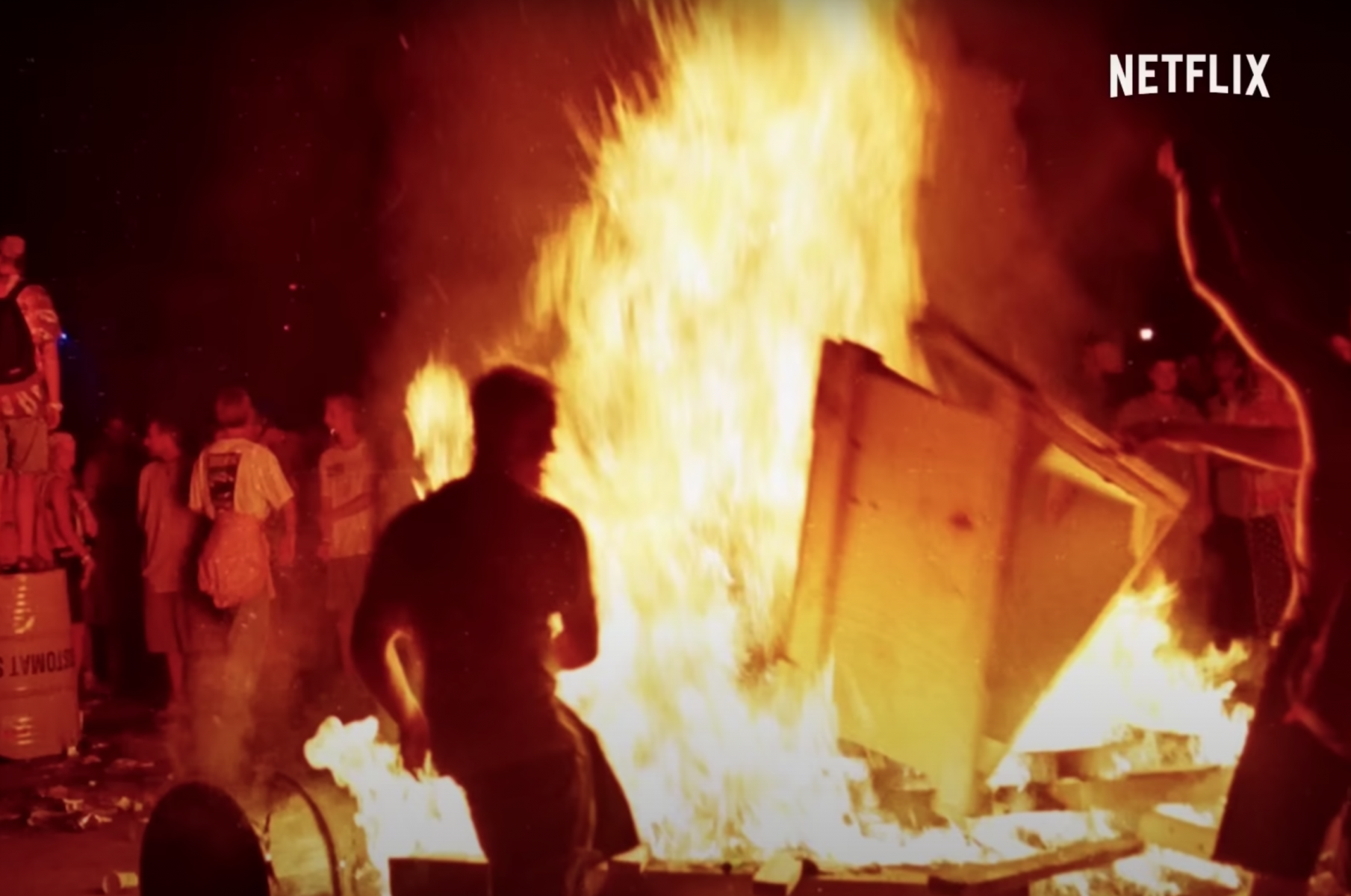These days, there’s no argument that Netflix can successfully rehash historical events, bringing the actual power players back together and elaborating on what they experienced over extended episodes. Viewers can’t get enough of small historical moments in time that they thought they knew, only to find out that they had it all wrong. “Trainwreck: Woodstock ‘99” is no exception. It has been two decades since Woodstock ’99 and over 50 years since the original Woodstock was held in 1969. Netflix has recruited the original founders, along with other Woodstock ’99 staff, attendees and performers, to recap the disaster that ended up ruining the iconic festival’s good name.
Long before Astroworld and Fyre Festival, Woodstock ’99 was the festival disaster in the headlines. But what started it all was the epic, original Woodstock that took place on a dairy farm in the state of New York. Woodstock brought popularity to the music festival scene and was a haven for the peace and love movement of hippies that was so prevalent. While the original plan was for Woodstock to be profitable for its founders, the absence of fencing on the farm allowed hundreds of thousands of people to enter the property for free. Close to half a million people attended Woodstock and it went down as a defining moment in American history. You can still visit the site of Woodstock to see the original stage and even a museum.
The creators of Woodstock spent the next few decades planning to recreate the event, but this time they planned to make money. There were a few different festivals that stood out in the following decades, but it wasn’t until its 30th anniversary that Woodstock went down in history for all the wrong reasons. “Trainwreck: Woodstock ‘99” intricately spells out the disaster that followed after the original creators reconvened. The documentary highlights how Woodstock ’99 ditched peace and love and replaced it with corporate greed. The attendees that are interviewed explain how they felt about their well-being being ignored and their entire weekend being turned into a cash grab.
The problems started with the venue: Gone was the rural country setting that previously charmed festival attendees. Instead, concertgoers found themselves on the hot pavement of a military base. Fences and walls were erected to keep out the ticketless. The interviewed attendees described how bringing drinks into the venue was banned and even their water was confiscated. This forced them to wait in excessive lines for a few water fountains or pay exorbitant prices to vendors; some attendees reported that water bottles cost as much as $12. The employees that worked for the promoters reported that cost-cutting measures took priority over safety, as teenagers were hired off the streets as security and no one was cleaning the bathroom facilities. One public health professional that was on site making sure things stayed safe explained how, through testing the drinking water, they discovered that it had been contaminated by the public bathroom water.
“Trainwreck: Woodstock ’99” also explains how the organizers of the event allowed performers to hype up the crowd until it was out of control. Limp Bizkit frontman Fred Durst suggested that the crowd “take all that negative energy” and let it out on the venue — and they did. Mob mentality took over; members of the crowd recklessly destroyed the sound towers and injured each other. In the documentary, Fred Durst insists he bears no responsibility for the crowd’s actions. While viewers might disagree, it’s clear that attendees being shaken down for money and having easy access to drugs and alcohol led to the crowd becoming disgruntled. Limp Bizkit’s suggestion to “break stuff” may have been the spark concert goers needed to move from agitated to explosive.
The next day was the final day of Woodstock ‘99, and the organizers were downplaying the negative things happening at the festival to the press. In retrospect, it’s clear during Jewel’s performance that the main staff knew how bad things had gotten. Jewel is rushed in to perform and then quickly rushed back onto her tour bus for a quick escape. Later that night, the final performers, the Red Hot Chili Peppers, came back out for an encore and that’s when the festival went from bad to worse.
The Woodstock staff handed out candles to the agitated crowd as part of a planned candlelight vigil to mourn the then-recent shooting at Columbine High School. One former member of the staff implies the organizers planned for the mayhem that followed. Documentary viewers might wonder if he’s on to something — after all, the crowd broke out the candles while the Red Hot Chili Peppers performed Jimi Hendrix’ song “Fire.” Surprising no one, fires broke out all over the venue and the crowd turned into a mob as it descended on the vendor tents and staff quarters. They destroyed ATMs and even exploded tanker trucks. The next morning, the scene looked like something from a war zone as the organizers continued to deny any culpability.
Critics of “Trainwreck: Woodstock ‘99” feel that the sexual assaults that occurred during the festival were not appropriately acknowledged by either the organizers or the documentary itself. While only four instances of rape were reported to police, “Trainwreck: Woodstock ‘99” captures countless acts of violence against women in just the footage it shows in the episodes. The documentary never informs viewers if the assaults were even investigated; in fact, it only gives these heinous crimes a tiny blurb in the last episode. One organizer not only shrugs off the assaults but even implies blame on behalf of the victims.
It still might be worth your time to watch the episodes on Netflix to gain a bigger picture of Woodstock ’99. The corporate greed, the toxic masculinity and the lack of any sort of concern for the well-being of attendees made the event an epic disaster. In 2022, music festivals can’t get away with everything Woodstock ’99 organizers did thanks to the prevalence of social media, which allows people to share their experiences in real-time.

















